By Ian Spanier
Want to be a fitness model? Sounds like a cool and easy way to make a living, doesn’t it? All you have to do is train all day, keep your diet on point, get your spray tan right, and start calling magazine editors and ad agencies, and the photo shoot offers—and then the checks, followed by an invitation to audition for The Expendables 3—will start rolling in immediately, no?
Well, no. There’s far more to this business than that. To show you what we mean, and to give you some idea of both what it takes to break into magazine work and what the shoots themselves entail, we’re bringing you this piece by Ian Spanier, one of the most successful—and influential—photographers in the fitness industry.
Spanier shoots for Gaspari Nutrition and Europa Sports, and his work has appeared just about everywhere, including Men’s Fitness, Muscle & Fitness, Shape, Flex, Muscular Development, MuscleMag, and several other major publications both in and outside the fitness world.
Defining the Shoot
Based on the work I do, I like to break down fitness photo shoots into two main categories: magazine work and advertising work. With advertising, the object of the game is a product shot, even if the product is a person. As a result, there’s usually just one image that’s intended to tell the whole story. An advertising image will be viewed much more critically than a magazine image, so for the photographer, advertising work can be very intense.
In contrast, when you shoot a magazine article, you’ll have a number of images that combine to tell a story—along with an opener image, and possibly a cover. A photo editor will give you a checklist of all the things you’ll need to get done, and from there, you’re given a bit more leeway in terms of trying to add some element of drama to your images.
These two styles, however, have meshed together in an unexpected way for me—and that’s how I’ve moved from doing strictly magazine work to shooting a lot of advertising. Whenever I do a magazine piece—even one that’s completely service-oriented—I try to shoot things in very dramatic ways. Advertising people would see how I did this and realize that my images could likely stand alone as images for a product. As I result, I ended up getting a lot of this type of work, so this technique is something I always suggest for young photographers.
What We Look For
When I’m doing a photo shoot for either an advertiser or a magazine, the first—and most important—thing we need is a subject who’s actually in shape and can perform all the moves on the shot list. Unfortunately, we’ll often have models come into shoots unprepared, either because of a bad diet or because they can’t work with the amount of weight we need them to use in order to properly illustrate a certain exercise.
For men, I’m referring to the abdominal region here. Shoots tend to go bad—or have to be altered—when models don’t come in as tight as they should be. We’re looking for vascularity and leanness in our models, and when they don’t look the way we need them to look, it’s because they haven’t prepared the right way. Whether this is a function of diet or training, they’re heavier than we want them to be, and this makes things a lot harder. If you’re looking to make money as a model, the idea is to do whatever you need to do to get yourself into condition for a shoot. Some models, however, don’t.
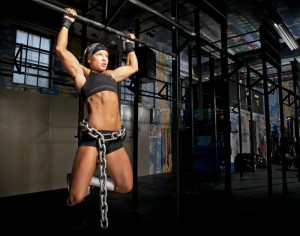 Training is part of the equation here, but this lack of preparation almost always comes down to an improper diet. When you’ve depleted yourself and cut everything out of your diet to get ready for a shoot, you should expect to come in feeling lethargic. That’s fine if you can deal with it—I work fairly quickly, so I try not to have marathon shoots—but sometimes we’re on set for ten hours or more. If you’re facing a long day like that and you’re not nutritionally prepared, it’s going to seem even longer. You won’t be able to do all the exercises we need you to, and you’re definitely going to make things a lot more difficult for everyone involved.
Training is part of the equation here, but this lack of preparation almost always comes down to an improper diet. When you’ve depleted yourself and cut everything out of your diet to get ready for a shoot, you should expect to come in feeling lethargic. That’s fine if you can deal with it—I work fairly quickly, so I try not to have marathon shoots—but sometimes we’re on set for ten hours or more. If you’re facing a long day like that and you’re not nutritionally prepared, it’s going to seem even longer. You won’t be able to do all the exercises we need you to, and you’re definitely going to make things a lot more difficult for everyone involved.
Your Attitude
With photo shoots, it’s always best to be prepared to go above and beyond what’s on your call sheet (the list of instructions for the shoot). On virtually every shoot, provided you look good and you’re ready, you’ll be asked to do extra shots—either because we’ve changed the plan for the day or because we need additional material for another article. If you’re ready for this eventuality ahead of time, you’ll be doing both your photographer and the editor who’s employing you a huge favor.
I’ve seen models come into shoots in ridiculously good shape, looking great, but when it came time to perform, they couldn’t lift 15 pound dumbbells to their shoulders when we asked them to do a lateral raise. This is unacceptable. If I’m stronger than the model, and I have to watch him struggle all day, that process is painful to me. This is akin to the magazine hiring a photographer who can’t find the shutter button on his camera.
I’ve also run into situations where models have come in with pre-existing injuries that rendered them incapable of doing certain exercises properly. If you’ve signed up for a bench press shoot, and you can’t straighten your arm because you broke it playing high school football, you shouldn’t be the model for this shoot—and it won’t do much for your reputation, either. When this happens, it’s easy to blame the magazine or the model’s agent, but it’s also the model’s fault for presenting himself in the wrong light. Make sure you can actually do what’s being asked of you before you agree to anything.
Breaking Into the Business
I don’t consider myself a “traditional” fitness photographer because it’s not the only type of photography I do, but since models see my name in a lot of magazines, they’ll email me asking if I can shoot them. When you’re ready to be photographed by a professional, expect to pay $1500-5000, depending on the circumstances. Unless you’ve found a talented young photographer looking to fill out his or her portfolio, you won’t get much out of a photo shoot that you don’t pay for. In this case, an old saying applies: “If you think it’s expensive to hire a professional, try hiring an amateur.”
In my experience, none of the models I’ve ever photographed for magazines and advertising—and I’m specifically referring to models here, not athletes or celebrities—have secured jobs without being represented by an agent. Being photographed and getting your photos in front of agents who deal with fitness-oriented representation is the best way to go if you’re looking for modeling jobs. You may be in terrific shape and look great, but you can’t just call an editor and say, “I think I’d be great in your magazine.” The business doesn’t work this way, and most—if not all—of these calls get ignored.
The Stuff That Counts
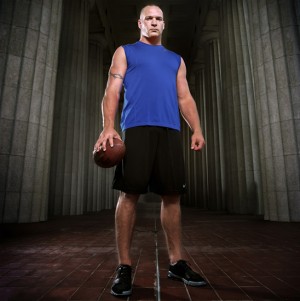 Photo editors are often presented with a choice between a model who looks great but can’t perform properly and a model who isn’t quite as fit but can do everything we ask with ease. There are a few factors in play with these decisions. If I’m shooting a model who’s slightly out of shape, I know what I’m capable of doing with Photoshop, so I know it’s possible to save the shoot on my end. Unfortunately, the elephant in the room here is the reality that Photoshop is always an option.
Photo editors are often presented with a choice between a model who looks great but can’t perform properly and a model who isn’t quite as fit but can do everything we ask with ease. There are a few factors in play with these decisions. If I’m shooting a model who’s slightly out of shape, I know what I’m capable of doing with Photoshop, so I know it’s possible to save the shoot on my end. Unfortunately, the elephant in the room here is the reality that Photoshop is always an option.
In cases like this, it also depends whether we’re shooting for a magazine article or for an advertisement. Magazine articles have more of a service component involved, so the most important thing there, at least for me, is exercise form. For these shoots, I’d opt for the model with the better form—and if we have to put him in a tee shirt to camouflage his subpar abs, then so be it. With advertising shoots, we’re dealing primarily with still images, so it’s a lot easier to “cheat” things a little bit. In that case, the better looking model is usually the better sale.
Salvaging Shoots With Bad Models
When models come in out of shape and the shoot has to proceed as planned, we’re usually able to make the most out of what little we’ve been given. Sometimes, as I said, we do this with Photoshop. We can also do it with clothing. With one professional athlete, we were able to get away with dressing him in a tight Under Armour shirt. This made him look big, and it let readers know the guy was in shape without opening the shoot up for criticism by showing abs that weren’t very tight.
In another case, we had a professional athlete show up completely out of shape. This guy literally had no definition in his arms, and you couldn’t see even a hint of a tricep. I won’t name names here, but this particular cover never happened. The magazine killed it. This is always very disappointing, because my only goal at the beginning of a shoot is to get the job done no matter what I have to do. This athlete didn’t prepare for the shoot—he’d agreed to do it at the last minute—and it was a waste of my time and everyone else’s.
How Photographers See Models
Photographers don’t view models the way you probably think we do. If we have a great day on a shoot, and the model worked out very well for us, I’ll say something to an editor. Or, if there’s a situation like a recurring article and I think someone I’ve worked with in the past is a good fit, I’ll suggest using them.
Without trying to sound intentionally mean here, however, the model is simply my subject for the day, and nothing more. He or she could be a bowl of spaghetti for all I care. For me, the shoot is about getting the article done—and not about the person in front of me. They’re models, not professional athletes or celebrities. They’re there to perform a specific function, just like I am, and I expect them to simply perform that function and go home, just like I do.
Males vs. Females
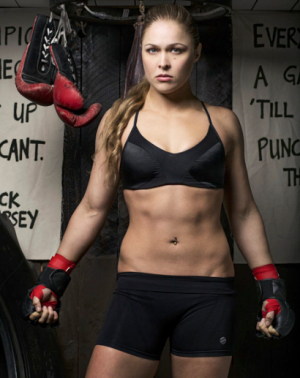 I’m generalizing somewhat here, but I can honestly say that I’ve seen more problems on photo shoots from men than I have from women. Female subjects are usually in great shape, and they pretty much always show up ready to go. Women also usually have a better attitude about what they have to do for us than men.
I’m generalizing somewhat here, but I can honestly say that I’ve seen more problems on photo shoots from men than I have from women. Female subjects are usually in great shape, and they pretty much always show up ready to go. Women also usually have a better attitude about what they have to do for us than men.
Whether they’re conventional models, athletes, or celebrities, women seem to be more appreciative of the fact that they’re being photographed—and almost all of the women I’ve ever worked with on fitness shoots have been happy to be there. Male models can tend to show up cranky—usually for dietary reasons—but I can’t say I’ve ever seen that with any of the women I’ve shot.
The Fitness Shoot
For fitness shoots, I’m a huge proponent of lighting, because lighting plays a major role in helping an image tell a story. What we’re trying to do here is light an object—the model—and doing this right way will highlight and accentuate all the things we’re trying to show.
Let’s say we’re shooting a bicep curl. When the model brings a barbell or dumbbell to the top position, there are shadows being created all over his biceps. Because of this, the viewer won’t be able to see the muscle the way it should look. To fix this problem, we may need to add an extra light, or change our angle in order to move those shadows and accentuate what we want people to see.
With advertising shoots, we want to create a dynamic image—and this is where I try to tell a story with my lighting. The more interesting the lighting is, the better it’s going to hold the viewer’s attention. With both magazines and advertising, we’re looking to produce images that will stop the reader and make him want to look, whether that means reading an article he may otherwise have glossed over, or taking the time to look at an ad he was about to flip past.
Game Planning
One of the main things I’m constantly driving home with young photographers and assistants is the value of scripting your moves before you actually arrive at a shoot. I’ll do this the night before—or even weeks in advance, if I can. If I’m walking into a location I’ve never seen, I’ll arrive on set early and plan out my ideas for what I’m going to do with my shots and lighting throughout the day.
Since the very beginning of my career, I’ve kept a notebook for this purpose, and I still have all my old notes covering how I’ve planned to light shoots. If I’m shooting a cover, I’ll sketch out my ideas beforehand for that, too. By doing things this way, I’m prepared before everything starts—and if things go wrong, I have a foundation from which I can make intelligent decisions.
Choosing Venues for Shoots
When deciding where to shoot—or when I give my input on this to magazine editors—I like to marry the location to the actual story as much as I can. Personally, I tend to gravitate toward more “raw” places with an old-school feel to them. I’m not really a fan of the more modern gyms that have carpeting on the floor, a bunch of new machines everywhere, and no character whatsoever.
One thing photographers despise is a gym that has mirrors everywhere. This is a bad situation for us because mirrors reflect light—and there are machines we need to shoot that can’t be moved away to better positions. There are ways around this, but with today’s photo budgets, it’s easier for me to minimize what needs to be done in post-production in terms of retouching by simply finding the right gym for a shoot.
A Word to the Aspiring Photographer
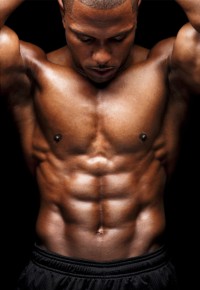 With fitness shoots, again, everything comes down to lighting. If you have a high skill level with lighting, it makes the fitness aspects of a shoot—i.e., the fitness knowledge level of the photographer—less important. With lighting, there are little subtleties that make huge differences in the quality of a shoot. The way the light falls on someone’s abs, for example, will accentuate their muscles and make everything look more impressive, provided you know how to light it effectively.
With fitness shoots, again, everything comes down to lighting. If you have a high skill level with lighting, it makes the fitness aspects of a shoot—i.e., the fitness knowledge level of the photographer—less important. With lighting, there are little subtleties that make huge differences in the quality of a shoot. The way the light falls on someone’s abs, for example, will accentuate their muscles and make everything look more impressive, provided you know how to light it effectively.
The other major attribute a good fitness photographer has to have is speed. I’ve had to do three separate shoots in a day, and to do that, you need to be able to move. If you take ten hours to do eight shots, it tortures everyone on a set. The idea, then, is to be fast and to know what you’re going to do before you do it.
There are always, however, things that are beyond our control. Equipment breaks down. Models don’t have the right clothes, and everyone has to wait. Things go wrong, and you have to expect this on photo shoots. Occasionally, you’ll be given a tremendously long shot list that you have to get through, and you know it’s going to take all day. If you have good assistants who know when it’s time to work hard, and you’ve gone into a shoot with a plan that includes contingencies for when things go wrong, it’ll help you build a great reputation with editors and make transitioning into a busier career with more work a lot easier.


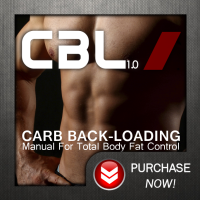



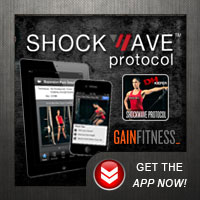
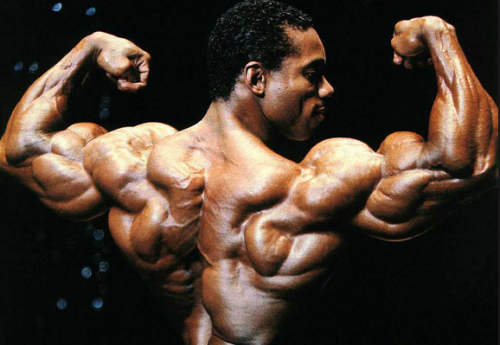
Recent Comments